Mexico's bus system used to be caricatured by images of rusted, overloaded, broken-down school buses with pigs and chickens on the roofs (and in the aisles). That kind of bus might still be found in a rural setting. The modern bus transportation industry continues to amaze, a heavily competitive, increasingly sophisticated group of lines offering in some cases not only clean on-board restrooms but recent movie releases, snacks, and beverages. And the cost is about a third of an airline ticket. No wonder even the Mexican middle class takes the bus.
I've traveled by bus so many thousands of kilometers I could write a book on the subject but with care, I can hopefully boil it all down to a blog entry. Topics covered include fares, tips for survival, and types of service. I started traveling by bus in Mexico as a child. Luckily, my father was a Mexicophile and took the family on many trips south of the border, often in the family car, but by public transportation as well. It should be noted that since I went from Veracruz to Merida by train as a boy, almost all rail travel has ceased in Mexico, the two exceptions being the Copper Canyon trip and the "Tequila Express" out of of Guadalajara, the latter a day trip out to the town of Tequila for a tour of a distillery and lunch. Nowadays, most Mexicans take buses.
If you've seen northern Mexico before and only want to get to a city in the interior -- say, Xalapa -- you can save time (and the cost of a hotel room) by going overnight. Using our Xalapa example, you could book a bus at Matamoros (across from Brownsville) at about 6 p.m. and wind up in Veracruz sometime in the morning (10 a.m. to 12 p.m.), with a brief stopover in Tampico. Since first class buses up to Xalapa leave about every hour at Veracruz, making a connection is easy; you may not even have time for breakfast, though the terminals serve fairly good meals. Whether you're first class or deluxe (or "Ejecutivo," meaning executive), you can put your seat back and sleep. (I find that over-the-counter diphenhydramine works well to ease you into a sleepy state, and if it's not the most comfortable rest you've had, you can always take a siesta in your Xalapa hotel room.)
Oddly, the Xalapa trip is the only one I took in Mexico that I encountered a pest. In this case, a flirty young woman who first usurped my reserved (yes, reserved bus seats: they're required on all lines), then spent half the night crawling over me to get down to the lower platform where the driver sits, the better to chat with him. She did the same thing at each stop. Although I thought it inconsiderate, I did not demand to have my reserved seat since little did I expect that anyone would have the unmitigated gall to take a window seat, then crawl her way to the aisle every thirty or so minutes. Needless to say, the night bus trick did not serve me well on that trip. But it was the exception.
Currently, the Matamoros-Veracruz fare is about $50. Try flying down for that. Even the executive class buses are reasonable; in fact, most times only a few dollars more than the regular first class. What you get for the extra money is a bucket seat, sometimes only three to a row, a snack, a drink (or bottled water), and an immaculate restroom. Also, the deluxe class is less likely to make a lot of stops. The slowest, stoppingest buses in Mexico are segunda clase, or second class. I took one from Puerto Vallarta to Colima once and thought better of it. Talk about a hot, dusty ride! The only alternative though was to backtrack to Guadalajara, where we'd come from, then take a directo to Colima from there. Looking at the map, the first class route looks three times as long, but that's just how the system works. In its favor, second class is cheaper, but time is money even to Mexicans.
I once took a second class bus out of Zacatecas for Tlaxcala. It, too, looked like a short jaunt on the map, but it took all day to get there. One of the stops, in Apizaco I think, was so long, I had to figure the driver had gone inside to have dinner, take a siesta, and get laid, we were that long just sitting in a street-corner terminal. This can be quite a dramatic introduction to Mexico and I have on many occasions found myself in such a situation and made such a subject of curiosity that when I chat in my pidgin Spanish, I make new friends for the remainder of the journey, and if they lapse into Nahuatl or Purepecha, I can at least get a laugh by saying I only understand a little Spanish, but in cantinas, "Puedo defenderme."
Ticket buying is as simple as pie. (Well, no, pie is a lot harder, especially if you are making the crust from scratch.) You simply get in line at the terminal counter and when called, "Si?" or "Paraservirle?" you step up and say where you're going and when you want to leave. (A big board will have departures and ticket prices behind the clerk, so that even if you have to say, "Tzintzuntzan?" phonetically, you can point to the board. (No first class service calls on this charming lakeside village full of woodworkers and their intricate carvings, but you can get a local out of either Morelia or Patzcuaro.)
This brings up the subject of Mexico having two basic types of bus: directo and de paso. The former means a bus that originates in your location or connects very briefly for some reason. The latter is bus making frequent stops or when flagged down, so it's slower but handy in small towns like Papantla. I have only spent two long periods of time making a connection, in Poza Rica, a grimy oil town south of Tampico, and in Tuxpan on a green river. I must assume that the Huasteca have secret devices designed to lure one to linger in such places, but being stuck in Poza Rica is like being stuck in Purgatory. Each minute seems an hour. Lesson: Take as many directos as possible.
That said, you can't assume that directo means Point A to Point B without stops. Hey, even a bus driver likes to check out the senoritas in the little mom and pop restaurants along the way, and the bus may need refueling, as for example nearly all first class from Guadalajara to the border towns of Texas, putting one in the ugliest part of Monterrey after dark for a thirty minute stint. By this point you may be so starved, you'll eat those nachos even if you did see the old woman pick a fly out of the cheese melt. This happened to my youngest son when we took a trip to Mazatlan and did the last leg from Los Mochis by bus, through what is, today, one of the Mexican Medelin's, in the heart of the narcotraficante zone. The turista didn't hit the boy until we arrived in Mazatlan shortly prior to daybreak, sleepy and exhausted. I ended up taking him to a clinic. Cost of examining physician and dispensary medications? About $30 US. Smile on Zachary's face the next morning? Priceless.
If you are on a de paso and want the driver to let you off anywhere but the final destination, show him your ticket. Make certain that if you check bags underneath the bus, you get a receipt for each piece of luggage. Depending on the terminal and line, you may be asked for the receipt. Just as often people simply point to something in the underbelly compartment and it's handed to them. Mexicans are fairly trusting people. Still, on some lines, e.g. ADO out of Mexico City, you will have to undergo baton inspection to see if you're carrying arms. This seems to be spreading, so expect it. Rarely, however, will a bus be pulled over by the federal troops at various checkpoints.
Unfortunately, if your Spanish is poor to weak (como yo), you may be disappointed at the movie playing on the drop down or side-mounted TV monitors. I rather liked seeing I Dreamed of Africa with Kim Bassinger on a bus from Puebla to Oaxaca, but wasn't all that excited to see it again on the bus making the return trip. (As if that were bad enough, something went wrong with the bus and we had an unscheduled hour layover in the Sierras at a cafeteria hugging the side of a mountain.) Just as often, the film is entirely in Spanish, and may be something thirty or forty years old (Tin-Tan musicals are popular, and you may be rewarded with the occasional film with Cantinflas (a.k.a. Mario Moreno, who gave a hospital to the Federal District and whose house in Cuernavaca is now a very popular, very chic restaurant).
Just because the families that line up on the topes (raised bumps in the road, on either end of every small village and town) and jump aboard to sell you snacks don't bring their wares wrapped in celophane isn't necessarily a reason to pass on them. The candies, presumably cooked, are probably a safe bet, and I have bought tamales from such vendors. These, I found to my enormous surprise, we not Tex-Mex style skinny things, but big fat hunks of masa mixed with fiery chili peppers and various herbs and spices. The vendor will inevitably exit the bus when it goes over the topes on the other side of town, there to catch the next bus going in the other direction.
I am unsure, but I presume that the ejecutivo class buses take cuotas, or toll roads. These avoid topes, which in itself spares an hour or two on every journey. In a private car, I can seldom go faster than fifty in Mexico, since you can't even be sure that such and such a village even has a warning sign before you reach its topes, and going over them faster than about ten or fifteen is painful on the butt and ruinous to the alignment of the auto. Mexicans mean business with their topes, which may have saved the lives of a lot of children and old folks. There should have been topes outside Stephen King's place in Maine.
Always ask the driver at a stop how long ("Cuantos minutos aqui?") before de-bussing. I've never missed a bus before by tarrying too long at a station, but I came close in Tomatlan, between Puerto Vallarta and Manzanillo, but off the road a good thirty minutes. The problem was, there are no restrooms on second class buses and I had to "go"; besides, the bus depot was just outside the public market, inviting a tour. I barely made it back to my seat in time.
I've done fairly wide-ranging bus trips through the interior of Mexico for two weeks on a $250 US budget for transportation, including taxis and combis. One cannot even buy a one-way airline ticket to Mexico from the U.S. for that kind of money. Besides, you get to see more of the country and its amazing people. I'd take the bus again, but I prefer going by car if I have time.
Saturday, August 2, 2008
Mexican Bus Ride
Labels:
Colima,
Guadalajara,
Matamoros,
Mexican buses,
narcotraficantes,
Patzcuaro,
Veracruz,
Xalapa
Subscribe to:
Post Comments (Atom)






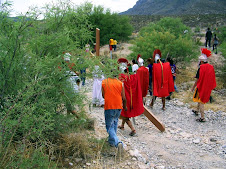






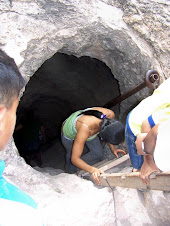



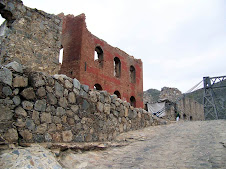




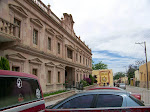






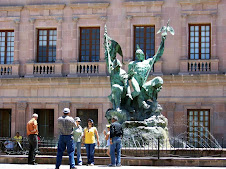






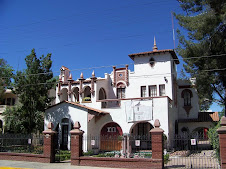







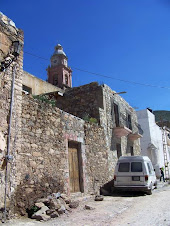






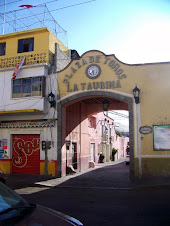
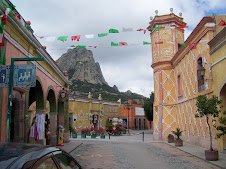




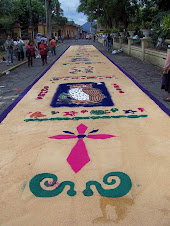


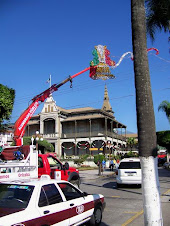
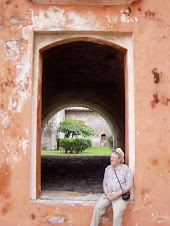






1 comment:
Thanks for your blog post! I will be visiting Mexico next month, and plan to take a bus from Zacatecas to Cancun, where my best friend lives. Everyone is warning me about the 'dangers' of busriding in Mexico, but your post just convinced me that my instincts were right, and that I should explore my parent's country with ease from the windows of a bus. I have taken bus rides in Mexico before, mostly with family, but even alone. I haven't traveled such a long distance as I plan to this summer, but I am sure I will make it over in one piece.
Anyway, thanks!
Post a Comment